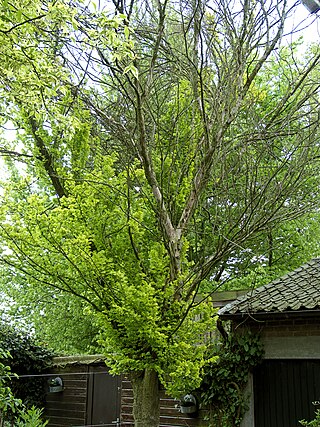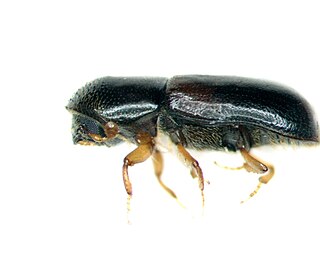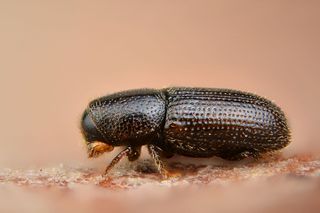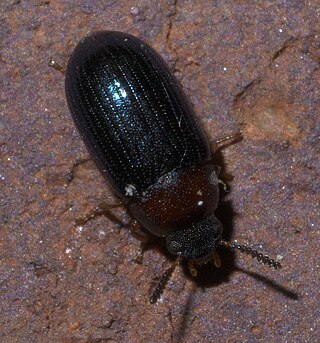
Ulmus americana, generally known as the American elm or, less commonly, as the white elm or water elm, is a species of elm native to eastern North America, naturally occurring from Nova Scotia west to Alberta and Montana, and south to Florida and central Texas. The American elm is an extremely hardy tree that can withstand winter temperatures as low as −42 °C. Trees in areas unaffected by Dutch elm disease (DED) can live for several hundred years. A prime example of the species was the Sauble Elm, which grew beside the banks of the Sauble River in Ontario, Canada, to a height of 43 m (140 ft), with a d.b.h of 196 cm (6.43 ft) before succumbing to DED; when it was felled in 1968, a tree-ring count established that it had germinated in 1701.

Dutch elm disease (DED) is caused by a member of the sac fungi (Ascomycota) affecting elm trees, and is spread by elm bark beetles. Believed to be originally native to Asia, the disease was accidentally introduced into America, Europe, and New Zealand. In these regions it has devastated native populations of elms that did not have resistance to the disease. The name "Dutch elm disease" refers to its identification in 1921 and later in the Netherlands by Dutch phytopathologists Bea Schwarz and Christine Buisman, who both worked with professor Johanna Westerdijk. The disease affects species in the genera Ulmus and Zelkova, therefore it is not specific to the Dutch elm hybrid.

A bark beetle is the common name for the subfamily of beetles Scolytinae. Previously, this was considered a distinct family (Scolytidae), but is now understood to be a specialized clade of the "true weevil" family (Curculionidae). Although the term "bark beetle" refers to the fact that many species feed in the inner bark (phloem) layer of trees, the subfamily also has many species with other lifestyles, including some that bore into wood, feed in fruit and seeds, or tunnel into herbaceous plants. Well-known species are members of the type genus Scolytus, namely the European elm bark beetle S. multistriatus and the large elm bark beetle S. scolytus, which like the American elm bark beetle Hylurgopinus rufipes, transmit Dutch elm disease fungi (Ophiostoma). The mountain pine beetle Dendroctonus ponderosae, southern pine beetle Dendroctonus frontalis, and their near relatives are major pests of conifer forests in North America. A similarly aggressive species in Europe is the spruce ips Ips typographus. A tiny bark beetle, the coffee berry borer, Hypothenemus hampei is a major pest on coffee plantations around the world.
Elm bark beetle is a common name for several insects and may refer to:
Ulmus bergmannianaC.K.Schneid., commonly known as Bergmann's elm, is a deciduous tree found across much of China in forests at elevations of 1500–3000 m.

Ulmus changii, occasionally known as the Hangzhou elm, is a small deciduous tree found across much of China in forests at elevations of up to 1800 m. Owing to its increasing scarcity, U. changii was added to the Hainan Province Protected Plants List in 2006.
Ulmus glaucescensFranch., the Gansu elm, is a small deciduous tree from the northern provinces of China, where it is found along river valleys and on mountain slopes at elevations of 2000–2600 m.

Ulmus lamellosa, commonly called the Hebei elm, is a small deciduous tree native to four Chinese provinces, Hebei, Henan, Nei Mongol, and Shanxi, to the west and south of Beijing.

Ulmus 'Morton Glossy' is a hybrid cultivar raised by the Morton Arboretum, Illinois. Originally named 'Charisma' until it was realized that name had already been registered for another plant, the tree was derived from a crossing of two other hybrid cultivars grown at the Morton: Accolade and Vanguard. Tested in the US National Elm Trial coordinated by Colorado State University, Triumph averaged a survival rate of 86% after 10 years. Triumph was introduced to the UK in 2006 by the Frank P. Matthews nursery in Worcestershire.

The Japanese elm cultivar Ulmus davidianavar.japonica 'Prospector' was originally treated as a cultivar of Wilson's elm U. wilsonianaSchneid., a species sunk as Ulmus davidiana var. japonica by Fu. A U.S. National Arboretum introduction, it was selected in 1975 from a batch of 1965 seedlings in Delaware, Ohio, and released without patent restrictions in 1990. 'Prospector' proved moderately successful in the US National Elm Trial, averaging a survival rate of 76% overall.
The American Elm cultivar Ulmus americana 'St. Croix' is a recent (2008) selection cloned from a large tree growing on a farm near Afton, Minnesota, which has displayed a high resistance to Dutch elm disease (DED). A U S patent, PP 20097, was granted in 2009.

Scolytus is a genus of bark beetles. It includes several species notorious for destroying trees in the forests. The Dutch elm disease is spread in North America by two species : the native elm bark beetle, Hylurgopinus rufipes, and the European elm bark beetle, Scolytus multistriatus. In Europe, while the aforementioned Scolytus multistriatus again acts as vector for infection, it is much less effective than the large elm bark beetle Scolytus scolytus.

Buprestis rufipes, the red-legged buprestis, is a green metallic wood boring beetle native to southern and eastern United States in North America. Little is known about this beetle. It apparently inhabits dead or dying hardwood in its adult phase.
Pseudopityophthorus is a genus of typical bark beetles in the family Curculionidae. There are about 11 described species in Pseudopityophthorus.

Scolytini is a tribe of typical bark beetles in the family Curculionidae. There are at least 50 genera and 160 described species in Scolytini.

Gnathotrichus is a genus of ambrosia beetles in the family Curculionidae. There are at least 40 described species in Gnathotrichus.

Crypturgus is a genus of typical bark beetles in the family Curculionidae. There are at least 30 described species in Crypturgus.

Hylesinini is a tribe of crenulate bark beetles in the family Curculionidae. There are at least 20 genera and 80 described species in Hylesinini.

Hylastes is a genus of crenulate bark beetles in the family Curculionidae. There are more than 90 described species in Hylastes.

Orthotomicus is a genus of typical bark beetles in the family Curculionidae. There are about nine described species in Orthotomicus.
















